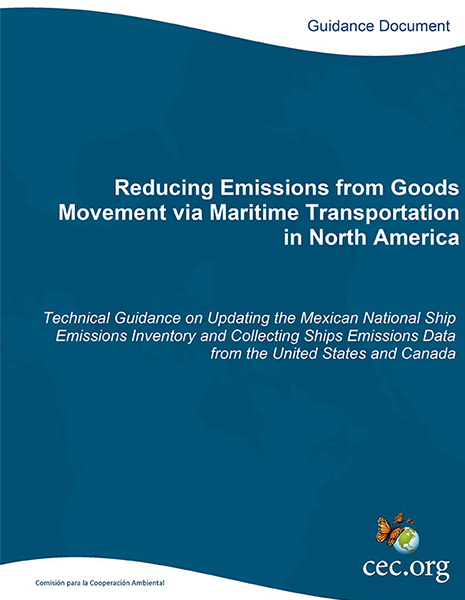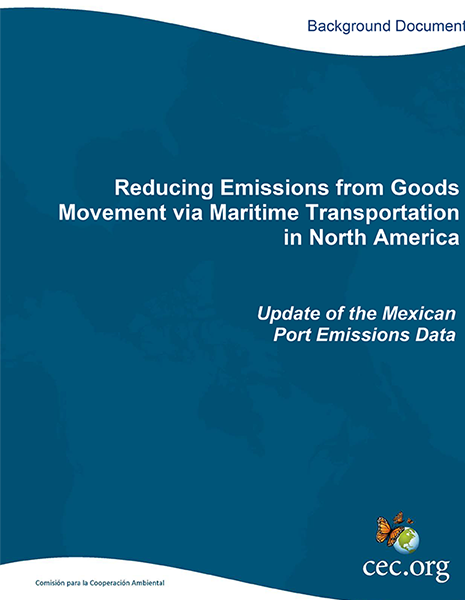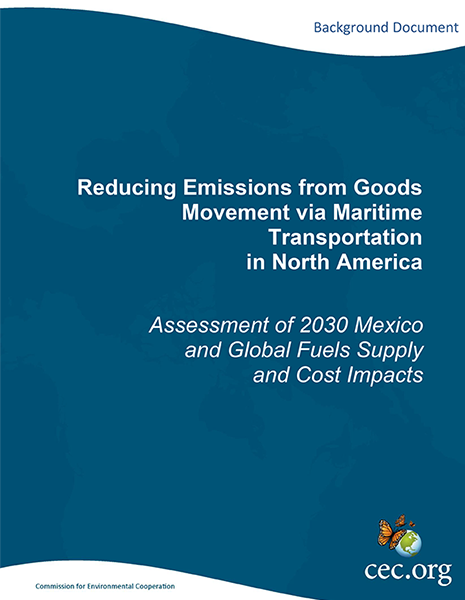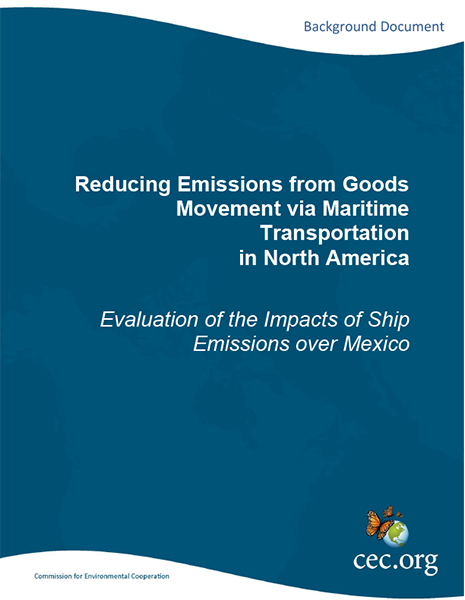Reducing Emissions from Goods Movement via Maritime Transportation in North America
Evaluation of the Impacts of Ship Emissions over Mexico
Reducing Emissions from Goods Movement via Maritime Transportation in North America
Evaluation of the Impacts of Ship Emissions over Mexico
Description
The influence of ship emissions on air quality in Mexico and the potential improvements resulting from the ratification of Annex VI of the International Convention for the Prevention of Pollution from Ships (Marpol Convention) and the establishment of a Mexican emission control area (ECA) have been evaluated using the WRF-Chem air quality model. The model’s performance for the base year (2011) was evaluated against ambient air quality data from monitoring stations, as well as meteorological parameters.
The modeling results for prospective scenarios in 2030 were used to feed the Environmental Benefits Mapping and Analysis Program (BenMAP). Two main pollutants (ozone and particulate matter less than or equal to 2.5 micrometers) were selected to evaluate the health and economic impacts of improvements in air quality resulting from reductions in the concentrations of these pollutants. Emissions from ships in the proposed Mexican ECA region contribute a significant number of cases of adverse health effects, especially in highly populated coastal areas. The implementation of an ECA for Mexico is expected to yield important health benefits for its inhabitants.
Additional Information
Related Publications

Reducing Emissions from Goods Movement via Maritime Transportation in North America
Technical Guidance on Updating the Mexican National Ship Emissions Inventory and Collecting Ships Emissions Data from the United States and Canada

Reducing Emissions from Goods Movement via Maritime Transportation in North America
Update of the Mexican Port Emissions Data

Reducing Emissions from Goods Movement via Maritime Transportation in North America
Assessment of 2030 Mexico and Global Fuels Supply and Cost Impacts Background Document
